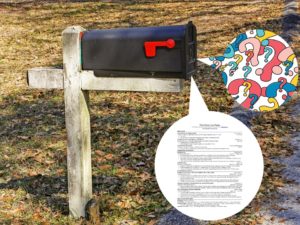
Over the last few weeks we have been asking for readers and followers to submit questions. Here is one we received, as well as my thoughts on the issue.
Q)
What does resume customization really look like? I’ve read about it on resume advice websites, but what does it really mean and look like in real life? I’m sure there are varying degrees of customization depending on the job position/application.
A)
Let me explain the theory, and readers can follow up with their grad career consultant to talk through specific situations or examples.
There are really two steps to the customization process: making big changes and little changes. When I want to sound fancy I refer to them as macro and micro changes. This week, we’ll tackle the macro changes.
The big changes are to the structure and content that you include in the resume. This level of customization deals with choosing the specific experiences from your background that relate to the position you’re applying for, and figuring out what aspects (tasks/accomplishments) from those experiences will best encourage the employer to interview you. You might ask yourself questions like “Is my education directly related to the position?” and “Do I have any work (or research) experience that is directly related?” Depending on the answer to those two questions, perhaps you end up moving your education down on that particular resume, or choosing to highlight certain things in your professional summary so that they catch the reader’s interest before they see your Education. In general, you want the sections on the page to be in order of importance to the job, and the information within each section to be reverse-chronological (most recent first). If a reader sees something that’s not particularly relevant, he or she might assume nothing else after that will be of greater relevance. It’s one technique they use to increase their efficiency of skimming through the resume.
Next, when choosing which bullets to use from each experience in your background, first determine which ones demonstrate that you’ve actually done similar work, and second determine which ones aren’t related but show a certain level of success and help confirm you as a “successful” person (because success begets success). Certain bullets that aren’t related to this job and also don’t show high success can be left off this customized version of the resume. Other macro changes include things like the order of your list of skills. On the master resume, they’re listed generally in order of your level of experience. It makes sense on some customized resumes to list them in order of importance to the job you’re applying for, even if that means a lesser-experienced-but-more-important skill comes before one you know really well but isn’t as relevant.
Check back on July 20th for Part 2 where I discuss the little changes that can make a big difference. In the meantime, are there other ways to customize the macro portions of a resume that I didn’t mention? Leave us a comment with your ideas!


2 pings